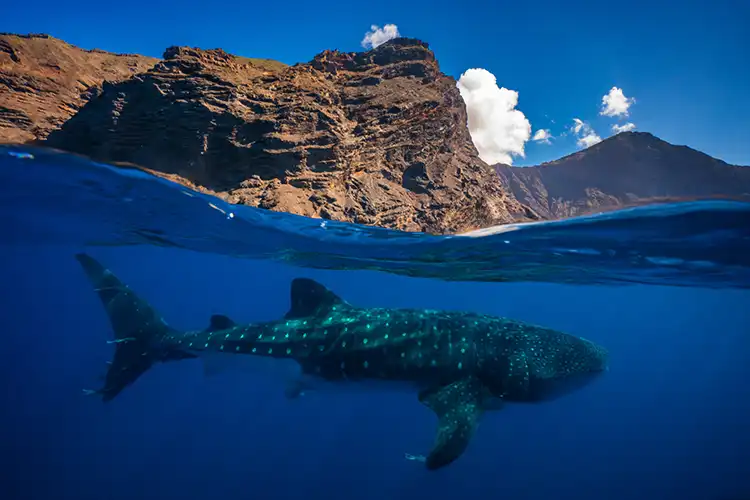
Sylvia Earle’s Mission Blue Foundation has named the South Atlantic island of St Helena Island a Hope Spot, in support of the island’s dedication to the management and monitoring of its unique marine environment.
‘This marine protected area and new Hope Spot of nearly half a million square miles now faces pressures largely outside its control from rapidly changing climate, invasive species and pollution,’ said Dr Earle.
‘By becoming a Hope Spot, St Helena can act as a beacon to the rest of the world. Although geographically isolated, it is deeply ecologically connected to many distant realms, and indeed, other Hope Spots.’
In September 2016, the island of St Helena officially designated its entire exclusive economic zone (EEZ) – almost 450,000 square km (174,000 sq mi) as a Category VI Marine Protected Area (MPA), adding additional protections to one of the world’s most important whale shark aggregations, and more than 800 species endemic to the area.
The MPA will also help to safeguard the important South Atlantic tuna fisheries, at increasing risk from large-scale industrial – and often illegal – fishing.
Helena Bennett, Director of the St Helena National Trust, and Dr Dayne Buddo, Director of Global Policy of Georgia Aquarium have been appointed as ‘Hope Spot Champions’ due to the long-standing partnership between the two organisations, which have been working with the St Helena Government for more than a decade to implement marine science and monitoring programs for the island.
Related articles
- St Helena dive guide – introduction
- St Helena tourism recovering after pandemic
- St Helena’s whale shark mating secret
- Scuba Diving St Helena | Marine Life

‘The remote island of St Helena is a very special area of marine biodiversity and represents true hope for ocean resilience,’ said Dr Buddo. ‘With steadfast resource conservation, this area should withstand the many issues that our ocean faces and demonstrate to the world the immense value of islands.’
‘The Ocean has a way of enchanting us, capturing our imagination and intriguing us with mysteries of the unexplored,’ added Ms Bennett. ‘Our island and its surrounding waters are steeped in our culture, and traditions and have played a massive role in our history’s timeline since our island’s discovery in 1502, evolving our way with a sense of nostalgia and a feeling of belonging and home’.
St Helena’s Government has recently published a new Marine Management Plan (MMP) for 2023 to 2027, which is supported by the UK Government’s Blue Belt Programme, a marine conservation initiative targeted at the UK’s Overseas Territories, including the British Antarctic Territory, Turks and Caicos and the Cayman Islands, among others.
St Helena has become synonymous with one of the world’s most important whale shark aggregations, one of the few places where adult male and female sharks are known to gather in almost equal numbers. Scientists believe the gathering may be an indication the sharks are mating in the island’s waters.
‘St Helena has an extraordinary combination of endemic species, natural beauty and the only known whale shark breeding location in the world,’ said Dr Alistair Dove, Vice President of Science and Education at Georgia Aquarium.
‘The Mission Blue Hope Spot designation, combined with the dedication of the local community to marine conservation, shows how we can save the ocean when we work together.’
- Don’t shop – dive! ‘Blue Friday’ celebrates its fifth birthday - 21 November 2025
- Suunto launches new Nautic & Nautic S dive computers - 18 November 2025
- Generations Below – a father-son team working to build a global underwater treasure hunt - 11 November 2025


